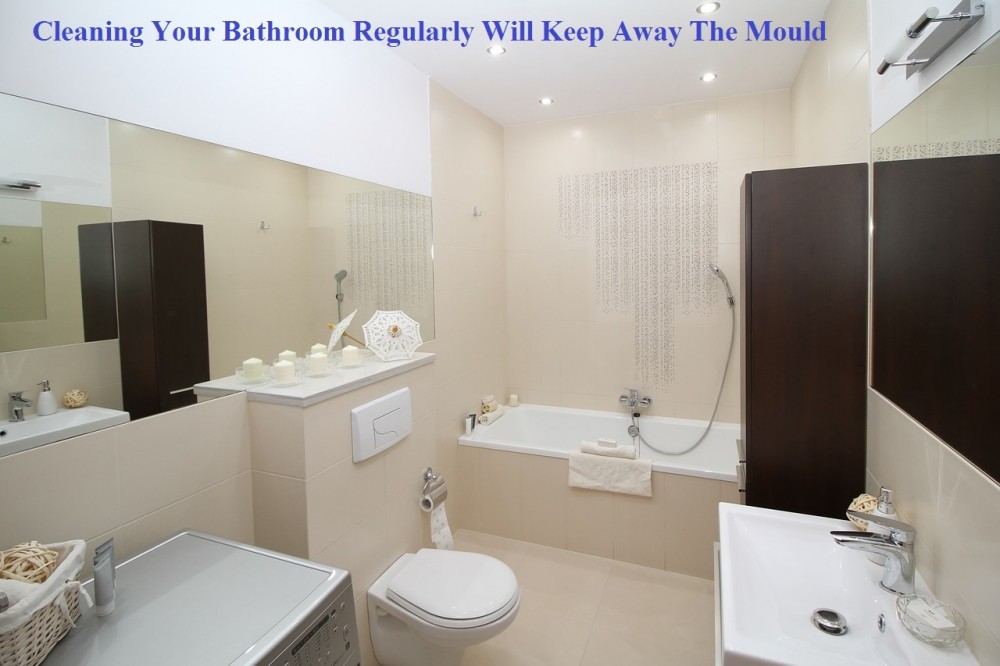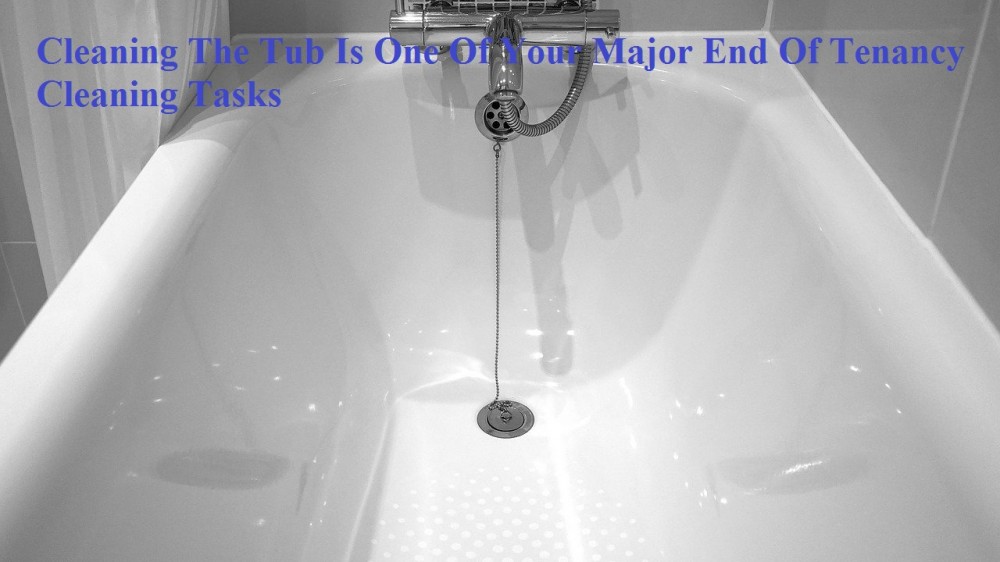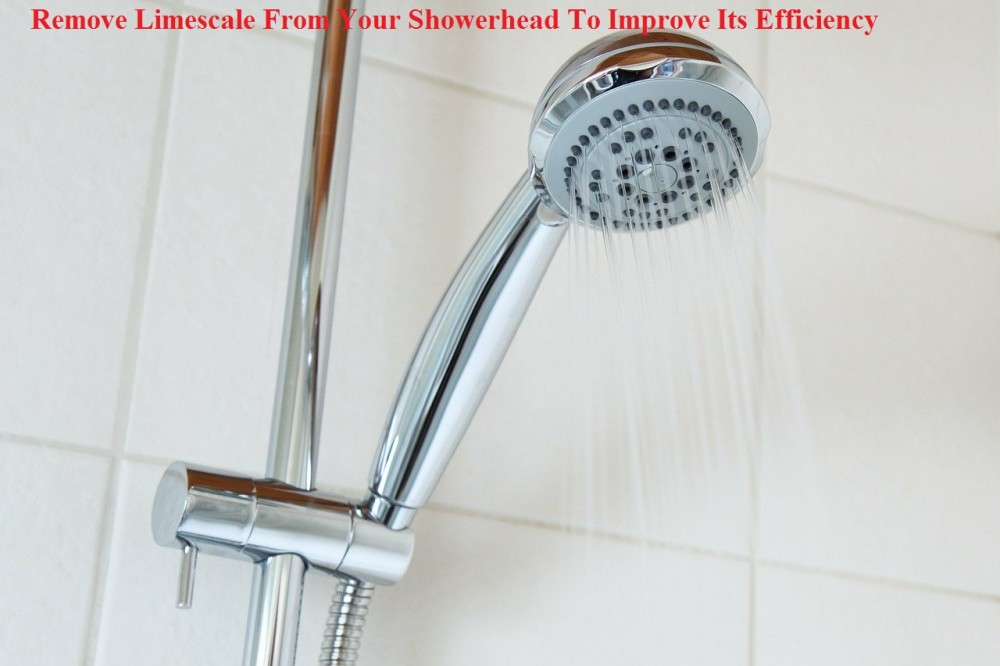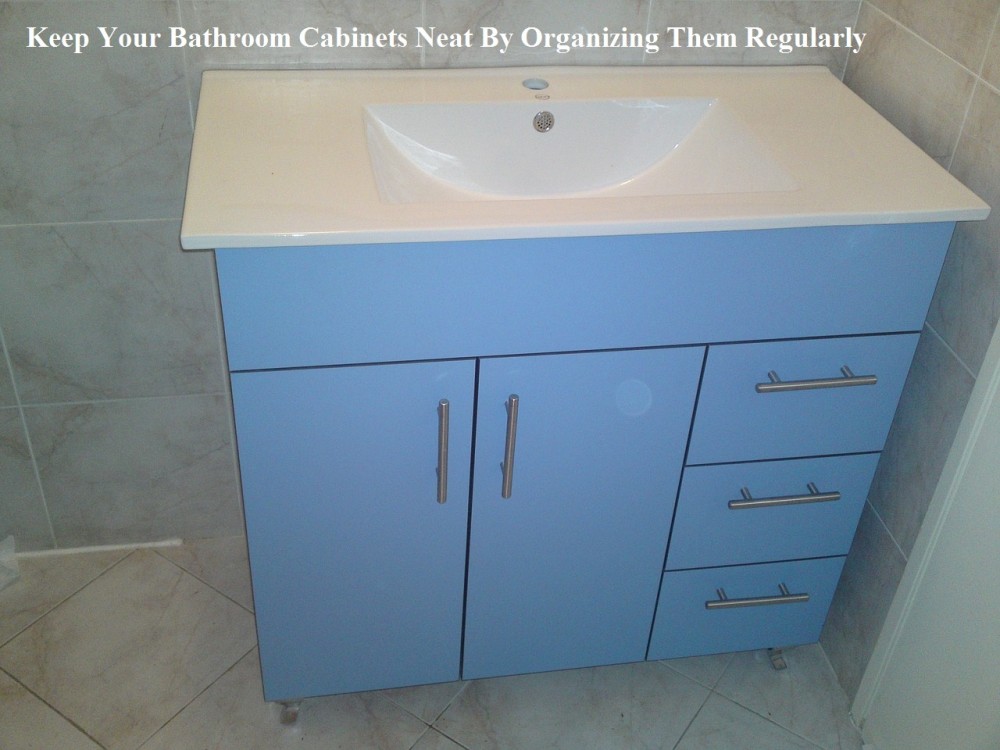Nobody Likes Bathroom Cleaning – But You Have To Do It
One job that I hate to do is clean the bathroom. Why? Because with everyone in my house is using it and because of this the bathroom is always getting dirty. It is a dirty job, and I am the one who is stuck doing it. Scrubbing the toilet, cleaning dried up toothpaste, emptying the trash can. It is not fun at all. I’d rather take the garbage out on a cold winter day!
You need to clean your bathroom thoroughly at least once per week. Unlike other rooms in your home, it cannot be just “picked up” and still be considered clean. I created a list of tips that will help make bathroom clean-up quicker and easier, and they can help teach your children the necessities of a clean bathroom.

General Tips How to Clean a Bathroom Like a Pro
Before you start cleaning the bathroom, remove all blinds, curtains, shower curtains and bath mats. Put those that are washable in the washing machine. They will be ready to put them back when you finish with the clean.
1. Grab your supplies: First, you will want to gather the cleaners and tools that you will need to complete the job. You will want to get a two-gallon bucket, a toilet brush, a scrub brush, an old toothbrush, a sponge, bleach OR ammonia, water, a mildew remover such as TILEX, and rubber gloves to protect your hands. If you have more than one bathroom, you may consider having duplicates of all these items in each bathroom as a time saver, especially if your bathrooms are on different levels. Stack up all cleaning materials at one place to avoid distractions. Running downstairs to grab the broom might make you wonder if the mail has come yet. When you check the mail, you decide to file some of it. A letter reminds you to call a family member. Before you know it, the bathroom is the last thing on your mind.
Grab all dirty clothing and put it in a hamper: Do not worry about anything except the dirty clothes. Do not interrupt your clothes-gathering mission by throwing away trash or putting away bottles of shampoo. Only worry about dirty clothing. Do not bother trying to turn socks right side out or unfold pant legs. Just throw it all in the hamper or basket.
Grab all trash and put in the trash can: Again, focus only on the trash.
Using a toilet brush and toilet cleaner, briefly scrub out the inside of the toilet: In the bucket, mix two parts water to one part of bleach OR ammonia. Never mix bleach and ammonia; this is very harmful. Pick one as your preference and stick with it throughout the entire bathroom. Put the rubber gloves on and pour a little of the mixture into the toilet. Take the sponge and dip it into the bucket of the mixture and wipe down the rim of the toilet and the seat. Also, wipe the outside of the bowl and the base of the toilet. Make sure to also clean the area behind the seat. Take the toilet brush and begin to scrub the inside of the toilet. Rinse your sponge as needed and then rinse in fresh water and re-wipe the entire area to remove the chemicals. Flush the toilet and that, the hardest and most disgusting part of cleaning your bathroom, is done. THROW AWAY THE TOILET SPONGE AND REPLACE.
Using a disinfectant wipe, wipe down the outside of the toilet: Using the wipe, it will not take long to run over the outer surface of the toilet briefly. You can quickly scrub out the most apparent dirt.
Using glass cleaner or vinegar, wipe down the mirror: I like to put a little time into this task even when I am in a hurry. Guests will probably spend the most time examining themselves in your mirror. They will inevitably notice dinginess and streaks.
Pick up all the items belonging in another room: Put them in a basket, box, or bag.
Return items that belong in the bathroom to their proper places: Do not take time to reorganize the medicine or linen cabinets. Just place the items back where they belong. Leave organizing for when you have more time.
Sweep or mop: Briefly sweep the floor. Worry about the main traffic area. If you have a Swifter, Ready mop, or something similar, it can take just a few seconds to mop.
Put away your supplies: Do not forget to take 3 seconds to marvel at your efficiency.
Mildew is the number one cleaning problem for the bathroom. It grows in the moisture, so keep the lights on at least ten minutes after a shower, and if you can, install fans to help keep the room dry. Make sure towels are hung up after use. Clean the walls with a mixture of bleach and warm water (open the windows first!) to keep mildew and other bacteria from growing. And here’s a new cleaning tip: You may also choose to repaint with mould retardant paint; it is available at home improvement stores.
Don’t Forget to Do the Following:
Absorbing the water. Wiping down the bathtub and the shower screen after each use will help remove soap and prevent mineral deposits. You can use a cloth to absorb the water and leave your tub dry and shiny. Although you may do this every day, the bathtub will require a deep cleaning at least once a week. Using a bathroom cleaner and a sponge to remove limescale and soap build-ups will further make your bath and shower shiny.
Close the shower curtains. After use, shower curtains remain wet, and it takes some time for them to dry out. Closing the shower curtain when your shower is not in use will speed up the drying process, which will prevent it from getting mouldy and smelly. It will, however, require washing after some time and the best solution is to wash it as usual in your washing machine with few more towels or bath mats. Use a regular amount of washing powder and a laundry conditioner which will also deodorise your curtain and it will smell nice.
Open the windows. To prevent the growth of mould in the bathroom, leave its window open for as long as possible. The increased amount of air circulation and light decrease moisture, so leave the curtains and blinds open during the day. Direct sunlight in the bathroom also prevents the growth of mould as well as heating in the winter, which dries the moisture. If you feel like you could do with a bit of exercise, you can carry out a quick window cleaning to the interior (and maybe exterior) of the glass.
Remove soap rings. This kind of rings appears on any bathroom surfaces after using oily bath products. Usually, plain water is enough to remove them, but in some cases when they have dried and have stayed for a long time, a bathroom cleaning detergent and a sponge will come handy. Wiping down rings from bottles which contain bath products after each use will prevent any soapy build-ups, and you will be able to deal with them quicker. If you let them dry and stay for a long time will take you longer to scrub and remove them.
Unclogging the shower heads. Shower heads become clogged with mineral deposits after a while. The best way to unclog it and make it work as intended is to place the shower head in a solution of concentrated vinegar for about an hour. The result should be immediate, rinse the vinegar, and it is ready for use.
Clean bath toys. For families with children, there is an addition to the standard bathroom cleaning – they need to clean the bath toys too from time to time. Using a harsh chemical is not a good idea as they may be harmful to the kids. Bathing them with vinegar will remove bacteria and dirt. Rub them with a sponge, rinse them with clean water and let them dry. This process could be repeated every month to maintain the toys clean.
Deep-cleaning The Bathtub
 The bathtub is an extraordinarily cumbersome task, and to get rid of that seemingly ever-present ring around the tub can be back-breaking. The first thing that you will want to do is to spray the bathtub and shower down with the mildew remover and let it sit for a few minutes. Make sure that the bathroom is well ventilated for the fumes that the cleaners will cause. Come back to the task in a few minutes – by this time, most of the work should be all done for you. There may be some soap scum build-up left, and for that, you will need your bucket of cleaner and your scrub brush. Take the scrub brush and begin to scrub the entire tub and walls gently. Re-dip when required. Once all the bathtub and walls and curtain and doors are washed clean, take the old toothbrush out again and dip into the mixture. Scrub the faucet and drain areas. Pour out the mixture in the bucket and fill with fresh water. Begin to rinse the tub and shower down to remove the chemicals. Then take another dry clean rag and wipe any water off the walls and floor of the tub and shower. You’re done!
The bathtub is an extraordinarily cumbersome task, and to get rid of that seemingly ever-present ring around the tub can be back-breaking. The first thing that you will want to do is to spray the bathtub and shower down with the mildew remover and let it sit for a few minutes. Make sure that the bathroom is well ventilated for the fumes that the cleaners will cause. Come back to the task in a few minutes – by this time, most of the work should be all done for you. There may be some soap scum build-up left, and for that, you will need your bucket of cleaner and your scrub brush. Take the scrub brush and begin to scrub the entire tub and walls gently. Re-dip when required. Once all the bathtub and walls and curtain and doors are washed clean, take the old toothbrush out again and dip into the mixture. Scrub the faucet and drain areas. Pour out the mixture in the bucket and fill with fresh water. Begin to rinse the tub and shower down to remove the chemicals. Then take another dry clean rag and wipe any water off the walls and floor of the tub and shower. You’re done!
The routine will be particularly useful if you are about to move out and have to perform the end of tenancy cleaning. Follow the tips above and you will achieve impressive results that will make your bathtub more than presentable.
Deep-cleaning The Shower
If you do not clean your shower at least once per week, the soap scum tends to get deposited on the walls along with spots of hard water, mildew and limescale. There are many products and brands available in the market for cleaning showers. It would be a good idea to use specific cleaning materials after every shower – like shower spray, for example. The basic idea is to clean after every use so that it does not get scummed in the first place.
Ylang Ylang Method Daily Shower: The Ylang Ylang Daily Shower needs to be sprayed on the shower surfaces and bath areas to remove the dirt and debris from the shower surface and prevent the build-up of scum. The product is very effective if applied regularly, and has an intoxicating scent. The spray removes the grime from the shower surfaces, and there is absolutely no need for scrubbing.
Scrubbing Bubbles Automatic Shower Cleaner: This is a breakthrough in shower cleaning products. It has an innovative automatic system of spray cleaning. Scrubbing Bubbles Automatic Shower Cleaner has a patented formula that mixes with the water on the bathroom walls to remove grime and goes on cleaning daily just at the touch of a button. The dirty shower is cleaned in only a few days, and a clean shower is kept sparkling fresh right from day one. The scrubbing is done away with forever. This product is fitted with a power sprayer that spins at 360 degrees, sprays the cleaning solution from a distance of over 8 feet. All the four walls of the shower are well covered by the power sprayer of Scrubbing Bubbles Automatic Shower Cleaner, and it works best for both types of showers, with glass doors or curtains.
303 Shower Shield: 303 Shower Shield is an easier and less expensive solution to cleaning showers. It has manifold cleaning benefits as well. You have to follow simple steps like cleaning the shower, and then spraying it with 303 Shower Shield and wiping it completely dry. It is just a few minutes, and you will have the cleanest and shining bathroom. 303 Shower Shield adds on a new lustre to the shower doors, walls and fixtures and removes the mineral deposits, soap film and mildew. The effect of this product is quite long-lasting, and it lasts for about six weeks or longer. 303 Shower Shield is an environmentally safe and biodegradable product with a pleasant scent of lemon.
Move-out cleaning tip: The shower is among the top areas that property managers and landlords check when you vacate the premises. Make sure you remove all rust and stains or accentuate its importance to the cleaners you hire!
Cleaning Your Bathroom Cabinet
 OK, when was the last time you cleaned up your bathroom cabinet? I can’t remember the last time I cleaned mine, but I moved house last year, so I have some excuse. Somebody had done a proper end of tenancy cleaning and left it all sparkling and ready for me to move my bits and pieces. So I’ve got some excuse. How about you?
OK, when was the last time you cleaned up your bathroom cabinet? I can’t remember the last time I cleaned mine, but I moved house last year, so I have some excuse. Somebody had done a proper end of tenancy cleaning and left it all sparkling and ready for me to move my bits and pieces. So I’ve got some excuse. How about you?
No more excuses then! Time to get to work. Arm yourself with plenty of rags, a huge box or some other place to corral bits and pieces and a few natural cleaning products – warm soapy water and a spray made from dilute vinegar and essential oil will be your most likely weapons, but you may need others. Also have some rubbish/recycling bins or bags on hand, because you’re going to have a clear-out.
Start by taking everything out of the cabinet. Put all the things in the big box, so they don’t get knocked or spilt as you work. If anything is broken or useless, put it in the appropriate recycling or rubbish box.
Now it’s time to get cleaning. Bathroom cupboards are usually coated with something like vinyl and are fairly easy to wipe out. Spray on your vinegar stuff and give the gunk a good wipe. This should get the worst off. It doesn’t clean off much grime? Try the soapy water and scrub again. Still, no joy? If that grey gunk is oil-based, then a paste of baking soda and water should shift it. If, after all these efforts, the gunk remains, then your best bet is to soak the spot in neat vinegar and leave it to soak for a bit. Another suitable natural solvent is vodka or some other strong alcohol.
However, if the stain in question is nail polish, then use nail polish remover to get rid of it. It doesn’t just work for removing polish from nails!
Rinse off whatever cleaning product you have used with a cloth dipped in fresh water – the tap is handy, after all. Dry out your bathroom cabinet after rinsing – mildew and mould can be a real bugbear in the bathroom, so making sure that everything is as dry as possible is a real must. If you already have problems in this area and are trying to clean mould and mildew off the bathroom cabinet, then this should be fixed by using neat vinegar – this kills mould spores, which is why vinegar is used as a natural preservative and germ-killer.
Now it’s time to put everything back in. But don’t just chuck everything back in willy-nilly. Check things over to make sure that nothing has passed its use-by date. If they have, out they go. Wipe the bottoms and sides of any bottles with a cloth dipped in warm soapy water to get any trickles off – you don’t want to get everything dirty just after you’ve cleaned the shelf.
Organise things as they go in. For example, keep all hair-related products together, all shaving products together, make-up, medicine, etc. etc. If you’ve got any double-ups of something you don’t use very often or that isn’t consumable (e.g. hair straighteners), consider donating the excess item to charity. Also, note any gaps – have you run out of sticking plasters or are the aspirins running low? Add these to your shopping list.
This may also be an excellent time to change your old toothbrush for a new one. But don’t throw the old one out, as old toothbrushes are very, very handy for all sorts of house cleaning jobs. Including cleaning the bathroom cabinet.
Here is an interesting observation: throughout my long years of doing after-tenancy cleaning jobs, I’ve noticed the following rule – people usually empty their kitchen cabinets and fridges, but they always forget a thing or too on the bathroom shelves. Do not leave the toothbrush behind – it makes a very poor impression on the cleaners!
Cleaning Materials – The Best Match For Each Bathroom Area
You know how I feel about the heavy commercial, chemical-based detergents – you will do better to stay away from them. Yes, they do a good job of cutting through the grease, but they tend to be very harsh on the skin, making it crack and itch. What’s more, the chemicals stink so much that the manufacturers load the product with artificial scents to make it smell tolerable, thus increasing a load of chemicals and potentially carcinogenic toxins in the wretched stuff.
As always, it is best to avoid harsh commercial cleaning chemicals. Yes, they do a good job of cutting through the grease, but they tend to be very harsh on the skin, making it crack and itch. What’s more, the chemicals stink so much that the manufacturers load the product with artificial scents to make it smell tolerable, thus increasing a load of chemicals and potentially carcinogenic toxins in the wretched stuff.
It’s best to stick to the natural stuff. For the general soap and dead skin that tends to make that awful grey ring around the tub, baking soda is your best bet. Sprinkle ordinary dry baking soda into the bathtub liberally, then get out a damp rag or three and rub at that ring until it vanishes. The grey ring will disappear.
Another natural cleaning alternative for the bath is to use an Enjo cloth or any other microfibre cloth.
Bath rings can be minimised by judicious use of what you put in the bath, apart from your body. Bath oils – even home made bath oils – tend to make the clean-up job worse. Bubble bath, however, reduces the ring. Unfortunately, a bubble bath isn’t precisely natural and can irritate the skin (so can shampoo, which has the same foaming effect but for an awful lot cheaper). Some natural bath products that don’t irritate the skin and don’t leave a mess that needs to be cleaned up are bath salts and bath kinds of vinegar – or a few drops of essential oil added when the bath is running.
The taps are another story. They get covered with soap scum. Spraying them with dilute vinegar and buffing them well with a soft, dry cloth tends to get them gleaming, and the vinegar neutralises the soap scum. The same treatment works wonders for the shower head, and the vinegar can also get rid of limescale – but you will have to use a slightly stronger solution of vinegar and maybe leave the vinegar on the metal for a bit longer.
Now for the screen that stops the water from the shower spattering all over the bathroom floor. If you have a plastic shower curtain, your problem is to prevent it from getting mouldy. Spreading it out fully after each use so it can dry, as well as taking steps to stop too much condensation (e.g. using an extractor fan or opening the window), will prevent mould growth. If mould dares to show its face, then take the shower curtain down and sponge it with neat vinegar or lemon juice before hanging it out to dry thoroughly. You may like to machine wash the shower curtain (in cold water) before drying it again and hanging it back up.
To clean a glass shower door, the best natural method is to mix up a solution of white vinegar, water and essential oil (tea tree essential oil is readily available and is antiseptic and, so is lavender oil). You can substitute a bit of vodka or some other strong alcohol for the vinegar if you like. Spray this over the glass shower door and leave it for about half a minute. Then buff the glass very thoroughly with a soft dry cloth until all moisture has gone. It leaves the glass gleaming – and this method can be used for cleaning all glass, including windows and mirrors.
